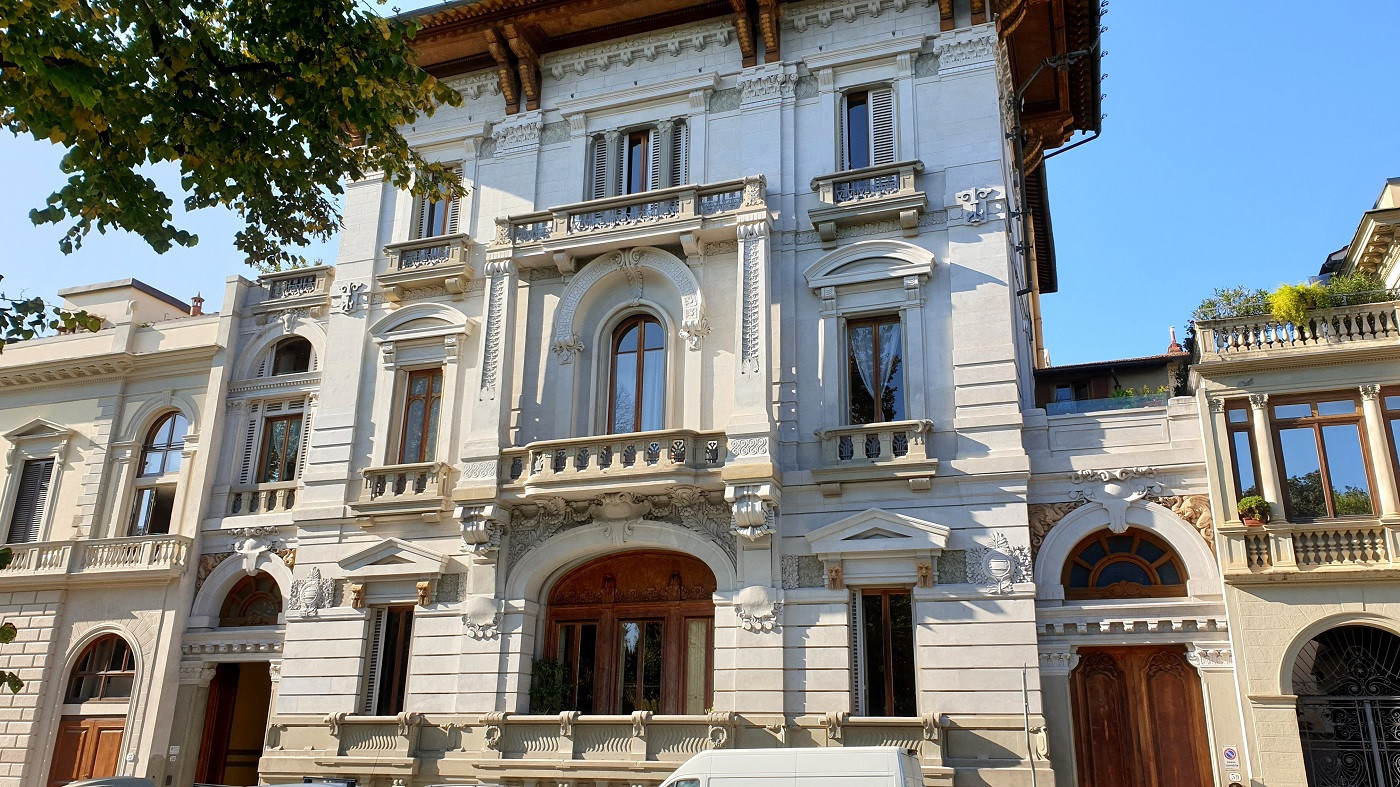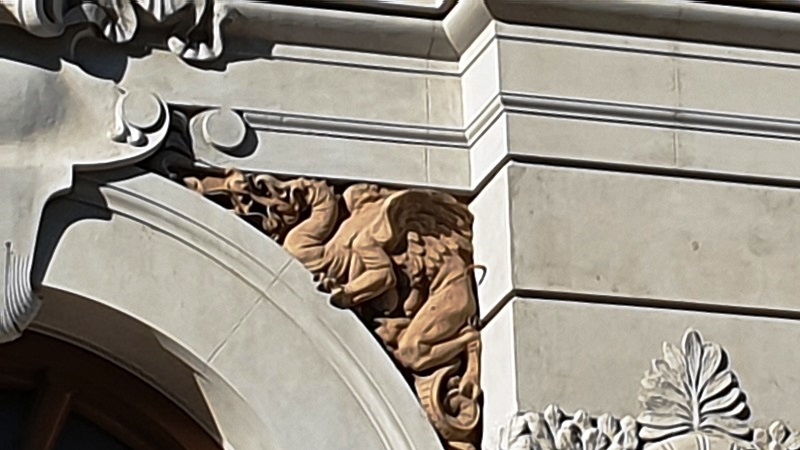
Beyond Renaissance in Florence - Il Villino Uzielli, Art Nouveau and Neoclassic
Not only Renaissance, other times, other
architectures --- The VILLINO UZIELLI.
The original construction was built in 1870 on
commission of Guido Uzielli, a wealthy banker. The building was part of the
urban structure of the area according to Giuseppe Poggi's plan of 1865 Firenze
Capitale, when the residences of the upper middle class and the state
bureaucracy concentrated here. In 1903 - 1906, the villa was completely
redesigned and enlarged by the architects Marco Paolo Emilio Andrè and Riccardo
Mazzanti. The analysis of the imposing façade is very instructive for those
interested in the History of Architecture, as it is a successful mix of two
styles: Art Nouveau and Neo-classic. The Art Nouveau parts, easy to spot, are:
the parapets of the balconies with iron railings in the shape of a lyre, the
obelisks that link the balconies, the frames and floral decorations with
foliage and garlands, the supports of the balconies on the first floor in the
shape of a stylized owl, the dragons of terracotta inside the lunettes of the
doors of the two lateral bodies, the large central balcony doors of the first
(with lowered arch) and second floor (with round arch), much larger than the
side windows, the polychromy of the inserts painted with floral elements on the
first and top floors, unfortunately in a bad state of conservation and partly
vanished. The very projecting roof on all sides and the crowding decorations
are particular, and only partly attributable to the Art Nouveau. The
neoclassical contributions are also evident: the pilasters ending with
Corinthian capitals, the tympanums of the side windows alternating in
rectilinear, curvilinear and triangular form (a pattern then spreading in
Florence), the stone frames in “pietra serena” in the internal corridors, the
linear and geometric subdivision of the whole structure. Florence, Piazza
Massimo D'Azeglio 39.

The Art Nouveau dragons of terracotta inside the lunettes of the doors of the two lateral bodies.



